Beirut (AP) – Four days of confrontation between pro -government armed men and members of a minority sect in Syria left nearly 100 dead and made fatal violence fear. The country is deeply divided because it tries to get out of decades of dictatorship.
The clashes are the worst between the forces faithful to the government and the Druze fighters since the fall of President Bashar al-Assad in early December, whose family ruled Syria with an iron handle for more than five decades.
The situation between the two parties has been tense for weeks, and a small confrontation broke out in March in a suburbs of Damascus.
Here are the main reasons why the clashes have developed in recent days and the history on both sides:
Who are the Druze?
The Druze religious sect is a minority group which began as an emanation of 11th century Ismailism, a branch of Shiite Islam. More than half of about 1 million Druze worldwide live in Syria. Most of the other Druze live in Lebanon and Israel, including in the Golan Heights, which Israel captured from Syria in 1967 in the six days of war and annexed in 1981. In Syria, they largely live in the southern province of Sweida and certain South suburbs.
The transitional government has promised to include the Druze, but has so far kept authority in the hands of the former Islamist insurgents who overthrew Assad in December – Hayat Tahrir al -Sham, or HTS.
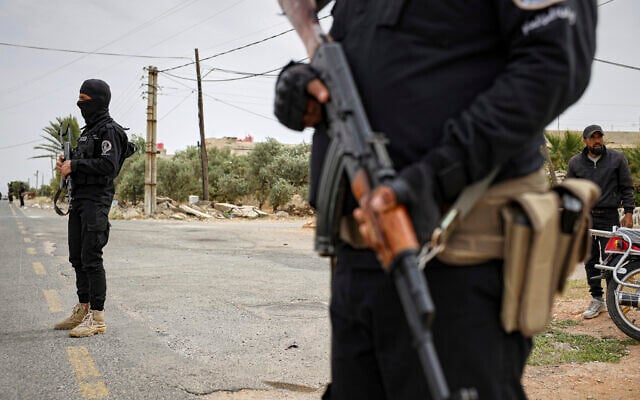
The security forces in Syria were deployed in a highway where they found bodies of combatants from Syrians Druze who were in a convoy heading to the province of southern Sweida to the capital to support their people, in Al-Sor al-Kobra Village near the city of Sweida, Southern Syria, Thursday, May 1225.
The new government of 23 members in Syria announced at the end of March, a single member of Druze, the Minister of Agriculture Amjad Badr.
Under the tight rule of the Assad family, religious freedom was guaranteed because the country then boasted of its secular and Arabic nationalist system.
The Druze were slightly divided on how to deal with their problems with the new status quo in the country. Most of the Druze support a dialogue with the government, while others support a more conflicting approach, so that the reactions have deferred when they are all concerned with the security of their people.
What is behind the tension between the sides
The religious and ethnic communities of Syria are concerned about their place in the new Syria system which is mainly led by Islamists, including some who have links with extremist groups.
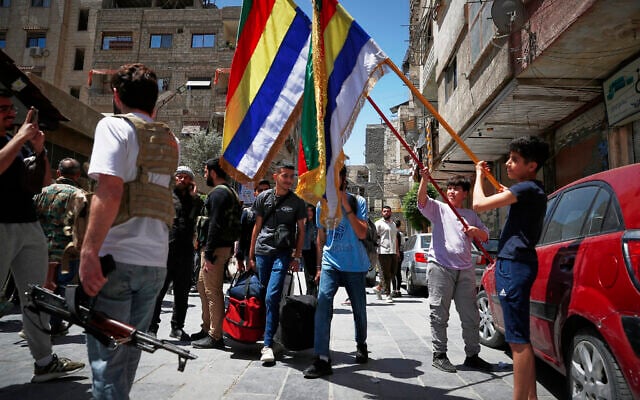
The Druze Boys hold the religious flags of their sect next to the armed men of Druze, one day after the clashes between members of the Druze minority section and pro-government fighters left at least four dead in the southern suburbs of Jaramana, Damascus, Syria, Tuesday, April 29, 2025.
The new president of the country Ahmad al-Sharaa is himself a former activist who was once a member of Al-Qaeda and was detained for years in prison in neighboring Iraq for his role in the anti-American insurgency. Although Al-Sharaa said that the rights of ethnic and religious minorities will be protected, there have been several sectarian murders since the fall of Assad.
The Assad family rule, which was dominated by the members of the Alawite sect, had oppressed a large part of the country’s Sunni majority while giving minorities of powers. Being a member of the Muslim Brotherhood, the country’s largest Islamic group in decades, was liable to death in the 80s.
Druze have had major concerns about Muslim groups since they were attacked by members of the Islamic State group in 2018 in the southern province of Sweida. He left dozens killed or injured, and more than two dozen people were taken hostage for almost four months. Muslim extremists consider Druze heretics.
During the 14 -year conflict in Syria, the Druze had their own militias.
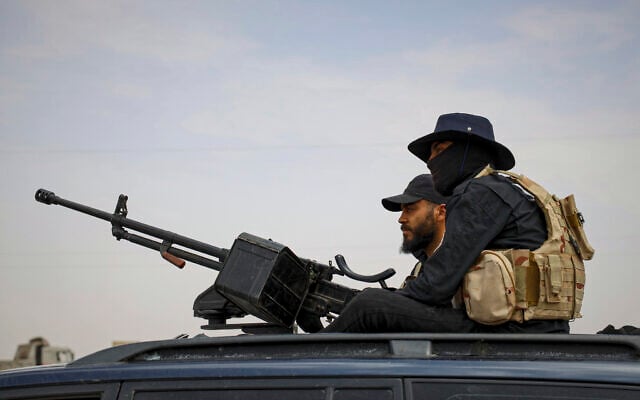
The Syrian security forces are deployed on a road where they found bodies of combatants from Syrians Druze who were in a convoy heading towards the province of southern Sweida in the direction of the capital, in the Al-Kobra village of Al-Sor, near the city of Sweida, Southern Syria, Thursday, May 1, 2025. (AP Photo / Omar Albam)
What triggered clashes?
The clashes broke out around midnight in the southern Damascus in Jaramana on midnight on Monday after an audio clip circulated on the social networks of a man criticizing the prophet Muhammad of Islam. Audio was attributed to a Clerc Druze. But Clerc Marwan Kiwan said in a video published on social networks that he was not responsible for the audio that has angry many Sunni Muslims.
The fighting then spread to the outskirts of the southern city of Sakhnaya, triggering the first Israeli air strike against pro-government armed men. Faced with the pressure of their own community of Druze, Israeli officials have promised to protect the Druze of Syria and have warned Islamic groups to enter the predominance areas of the Druze.
The clashes attracted Israel further in the conflict with the air strike two days ago, and Friday marked a major increase in tensions with an attack close to the presidential palace of Damascus in what the Presidency of Syria described as major climbing.
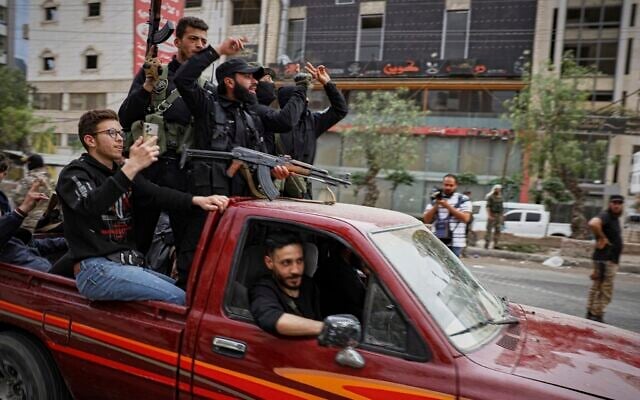
The members of the Syrian security forces are deployed in the city of Sahnaya, south of Damascus, Wednesday, April 30, 2025, after previous clashes with Druze combatants (AP photo / Omar Albam)
Israel says that he does not want Islamic extremists to the northern border of the country. Since the fall of Assad, Israel has sculpted a buffer zone in southern Syria and has destroyed a large part of the advantages of the Syrian army so that they do not fall into the hands of groups which have withdrawn it from power.
Israel has been warning for decades that Iran and its attorney are a danger along its northern border, and now it does the same with the new authorities in Syria, which are supported by Turkey.
Other sporadic attacks in different fields, as well as an ambush on the Damascus-Sweida motorway, aggravates the situation until an agreement was concluded on Friday, after which the forces of the Ministry of the Interior and the armed men of Local Druze were deployed in different fields.
The war in Great Britain was watching the Syrian Human Rights Observatory alleged that 99 people had been killed in the last four days, 51 of whom were killed in Sakhnaya and in the suburbs of Druze-Majority Damas in Jaramana. Among them were local armed men and security forces.
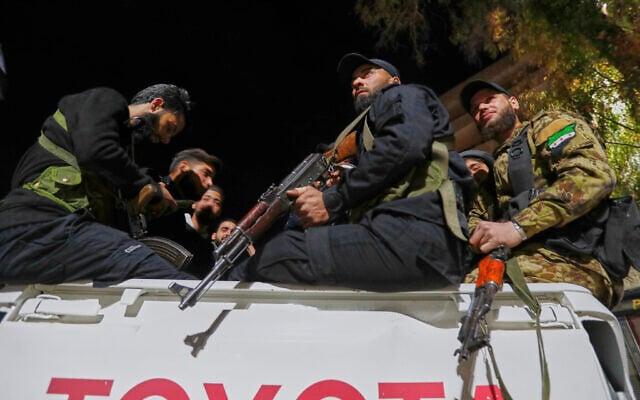
The security forces in Syria are held on their vehicle, after having concluded an agreement with the armed men of Druze to deploy around Jaramana, a suburb of Damascus who saw fights earlier this week, in Damascus, Syria, early Friday, May 2, 2025. (AP photo / Omar Sanadiki)
What are the main concerns?
The clashes near Damascus and in southern Syria occurred almost two months after an ambush by fighters loyal to Assad triggered days of sectarian attacks and revenge. Fighting in the country’s coastal region have killed more than 1,000 people. Many deaths were civilians who were slaughtered because they belonged to the minority section to which Assad belongs.
The security forces deployed in the coastal provinces of Latakia and Tartus, but activists say that sectarian murders against Alawites are still held, although a much slower rate compared to attacks in early March.
The members of religious minorities in Syria, such as Alawites, Christians and Druze, fear persecution by the main Sunni Muslim groups. The videos circulated on social networks showing that Islamist fighters insulting Druze prisoners and humiliating them, as by shaving their mustaches.



